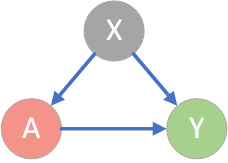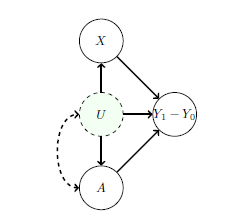Unlike a standard causal model with A = Treatment, X = Confounder, and Y = Outcome:
a difference-in-differences (DiD) model is concerned with estimating the Average Treatment Effect on the Treated (ATT) $= E(Y_1-Y_0|A=1)$.
Hence we're interested in the causal effects of confounders on the trends in the outcome over time (pre and post periods) between the treatment and control groups. (See see Daw & Hatfield (2018) and Zeldow & Hatfield (2021))
Therefore, for the purposes of drawing a DiD causal diagram is it as simple as replacing Y with ATT:
or perhaps $Y_{post} - Y_{pre}$?



